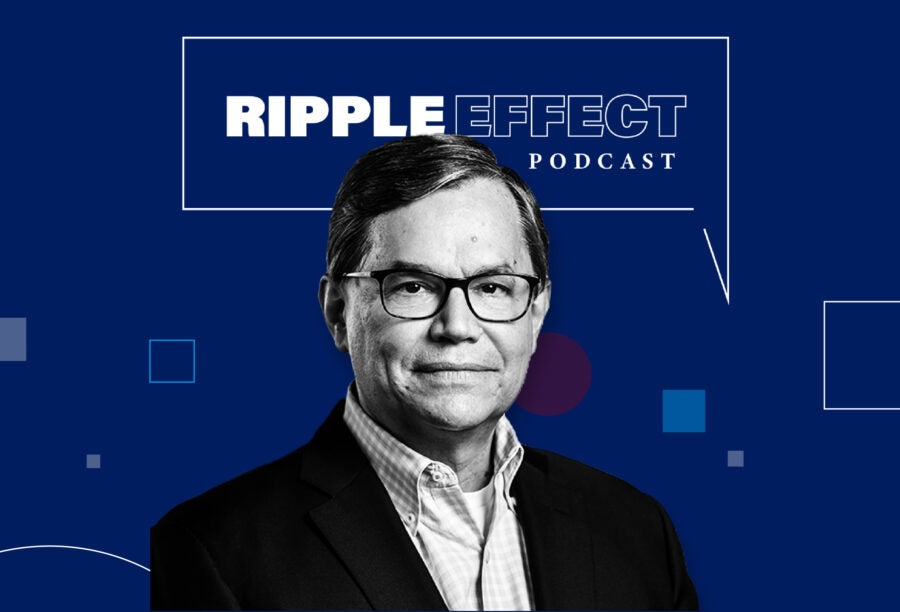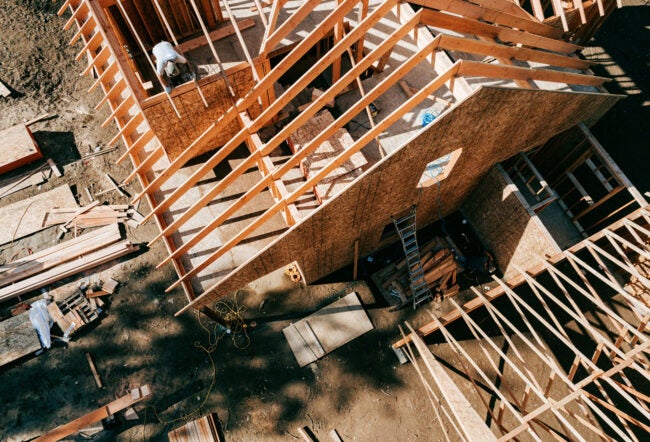Commercial real estate will never be the same after the pandemic permanently changed work habits. Wharton’s Joe Gyourko explains how empty office buildings will impact cities long term. This episode is part of a series on “Real Estate.”
Transcript
Are Empty Office Buildings the Next Real Estate Crisis?
Dan Loney: This has been such a unique time for real estate in general. But when you think about commercial, how do you put into perspective what we've seen because of the pandemic and work from home, inflation, and how companies are thinking about their footprint in the future?
Joe Gyourko: The big shock is work from home. And by commercial, you mean "office" because there are many, many sectors of commercial real estate. Data centers are doing extremely well with developments in AI. But office has been hit by what I think of as an obsolescent shock, akin to what Amazon and the web did to malls 15 to 20 years ago. It is a very deep and big shock, and it is roiling that sector of real estate.
Loney: Part of the concern is the vacancy rates. Companies are still thinking about, "Do I want to bring my employees back full time? Do I need to bring them back three days a week, four days a week?" That's going to determine how a lot of this plays out, right?
Gyourko: Right, although I think there's increasingly widespread agreement that unless you're in a person-to-person services business, a restaurant worker and the like, five days a week is not going to be the norm. It's not the norm at Wharton. It's not the norm in most office-using firms. So, I think there's agreement it will be one to two days on average, with a huge amount of variation across that. That's somewhere between a 20% and 40% drop in demand for offices. That's why the vacancy rates are above the levels we saw in the worst of times in the [Great Recession].
Loney: How will companies adjust to that?
Gyourko: I don't know of many companies that are increasing their footprint in office. It is not true that everyone is going to work virtually. It won't work. At Wharton, we teach in person. It's clearly superior if we teach in person. That means I need to come in and work on campus. But for many offices, that's not true, and I think we are seeing a permanent decline in demand. It's an obsolescent shock, and it has led to a bifurcation in the office sector.
The newer, better buildings are filling up with tenants taking less space than they would have five to 10 years ago, but they're filling up, and they have good rents. But then we have this other sector in office, Class B it's called, where the typical vacancy rate is 15% to 20%, with a big dispersion about that, which means there is a decent amount of product out there with 30+ vacancy rates. And you will lose money. That building will fail unless those conditions change.
Potential Solutions for Empty Office Buildings
Loney: For some of those properties, are they ones that fall into this theory about refurbishment into potentially other uses?
Gyourko: Apartments.
Loney: Apartments being one, but it seems like there is so much potential of that type of space out there. Do we need to even serve that level of apartment use?
Gyourko: It's too expensive to convert. It will happen. It will happen in markets where apartment rents are really high. There's a really wonderful paper by a group of economists at Columbia who have looked into this. In New York, monthly rents can reach as high as $8 per square foot in parts of Manhattan. You will see conversions of offices because those authors estimate $500 to $600 a foot in conversion costs.
In Philadelphia, I know a firm that is working on one building downtown. It's about $300 a foot in conversion costs. That means in Philly, that will happen no more than five times throughout this cycle. The conversion costs are just too high given our level of rents, so conversions are not going to solve this problem. They will happen, but they won't solve the problem.
Loney: What, then, is the expectation for new build? Are we talking about rates that maybe are similar to what we saw before the pandemic? Or is it lower? And I'll throw this into the mix: We have seen new office buildings going up with more environmentally friendly components.
Gyourko: That's for sure. Those are expensive. It's expensive to be environmentally friendly, but if you're going to have a footprint in office, you want that for your employees. It helps you get your employees back. That's going to happen, and those rents will be high enough for those folks to make money. It's the other buildings that are going to fail, and they're a real threat to urban centers and to the public fiscs of governments like Philadelphia.
Loney: Will we see real estate investors really struggle and potentially have to fight at their bottom lines because of some of these issues?
Gyourko: In office, you're already seeing it. You are seeing office trades in some markets at anywhere from 25% to 50% of purchase price pre-pandemic. So, you're seeing deep, deep discounts already. That means a bank is basically working with the owner. The owner is going to give back the keys, and the bank is facilitating a sale to get as much of its loan balance back as it can. That's how problematic it is for buildings that simply cannot convert.
How Will This Real Estate Crisis Impact Cities Long Term?
Loney: How is this shift in commercial real estate going to be impacting cities, their governments, and their tax footprint? We see it here in Philadelphia, about how much the city is giving back to employees who have a contract to work outside the city with their company. They are paying wage tax, but they are going to get it back.
Gyourko: I don't think any city government understands the magnitude of the problem. Because of long leases, five to 10-year leases in office, this is like a slow-motion train wreck. Some buildings are failing now. Some will fail over the next five years. And the problem for the cities is not just that the office won't pay property taxes anymore. Around office nodes, business ecosystems built up -- bars, restaurants, sometimes hotels, small shops. They will not be profitable. They were built and created. Their business models were flows five days a week of people in the offices. You're going to see it's a threat to whole neighborhoods, and it's many neighborhoods in every large city. It's unavoidable. I think this is a true, permanent obsolescent shock. It will not kill all the office market, but it will kill a meaningfully large number of buildings that will negatively impact public finance in cities.
Loney: How does the real estate owner go about trying to mitigate that part of the problem?
Gyourko: I don't think they can, right? Invite me back in a few years. Ultimately, I think the federal and state governments will have to support work-outs to prevent these neighborhoods with office buildings that won't make it through this. Otherwise, you're going to see real fiscal problems in cities.
Loney: What's your expectation on rent prices in general? Are some of these landlords going to have to cut back a little bit in order to not have mass exodus from companies or even some of these small businesses.
Gyourko: For sure, although it's remarkable. Rent growth is still pretty strong in the best buildings. They're the ones filling up. Those are the environmentally friendly buildings. They have outdoor space. They're configured right. It just takes big capital costs to get that building created. I think you're going to see more of a bifurcation, where a number of buildings actually fail. They literally disappear. Some will get converted into apartments, but most will be torn down and replaced by something else over the next decade. It's going to be a long story and struggle for cities in this regard.
Loney: Nobody could forecast seeing this develop the way that it has.
Gyourko: The pandemic was uniquely bad for lower-quality office product. Again, I view it as a true obsolescent shock. Just like Amazon and its competitors made a decent amount of mall space obsolete, the pandemic forced all businesses to work from home for a while. And then they realized, "Wow, at least for a short period of time, we could actually run a business."
I don't know a business in any sector that doesn't think their finance and accounting ran just fine work-from-home. So why do you need those folks in the office? That's what's shrinking the footprint. You talk to law firm managing partners, and they'll go, "You know, there are certain days we need to be here, but it's not five." Somebody has got to be a big loser, and it's going to be the lower-quality B offices.
It's all driven by the decline in the demand. I think it's a permanent decline in demand that, over a very long period of time, the economy will grow and will grow out of it. But that's a decade or two. In the short run, it's sobering. There will be a number of landlords who just give back the keys, and there will be cities facing this fiscal threat of once they give back the keys, they no longer pay property taxes, and the businesses around them start to fail, too.
Loney: There is potentially a path to alleviate some of this, but it's still a ways off at this point.
Gyourko: Yes, I don't think anybody but a few academics are starting to think about it. It will take real resources. I can't imagine cities like Philadelphia dealing with this on their own. It will take state and federal resources.



